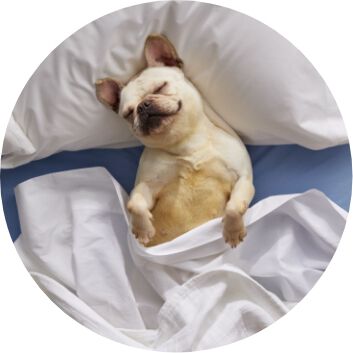How to Sleep Better:
Dr. Darria’s Top 5 Tips

Dr. Darria Long, MD MBA
Did you know that solving your sleep problems could be as easy as a simple sleep-space fix? Yep. For all the time we spend worrying about getting enough ZZZZs, sometimes we don’t realize how much our sleep environment can impact both our ability to fall asleep and our quality of sleep—and how easy it can be to improve both.
How can that be? It’s all biology: Our body clocks sync with our environment; when our environment feels restful, it signals our brain that it’s time (and safe!) to fall asleep. But even a subtly non-restful environment sends unconscious signals to stay awake—stealthily robbing us of our ZZZZs.
So, if you’re struggling to snooze and want to know how to sleep better, it’s time for my “Sleep Space Audit.” Use these five science-based steps to turn your bedroom into a sleep-promoting sanctuary.
1) Set the Perfect Sleeping Temperature
The thermostat war stakes are real: temperature is a major driver of sleep. While our bodies average 98.6 F, our temperature actually fluctuates. It dips a little during the afternoon, rises again, and then falls back down around 10pm. That temperature fall signals your brain to sleep (which is why the temporary afternoon dip makes you want to take a nap), but here’s the amazing thing: You can actually hack it at night to make sleep easier.
























